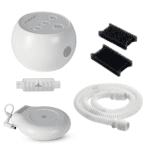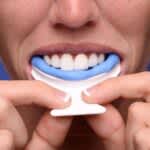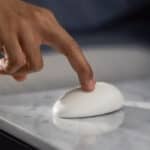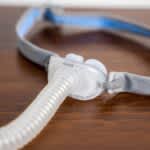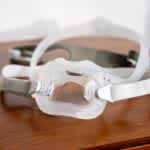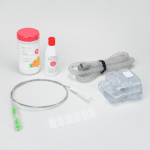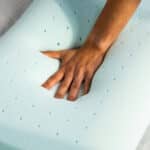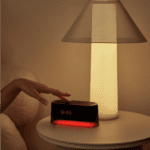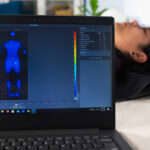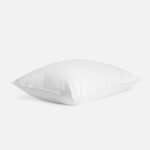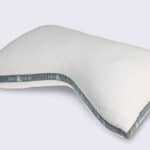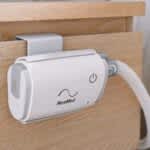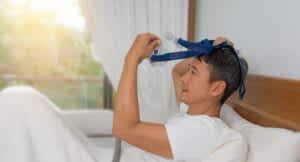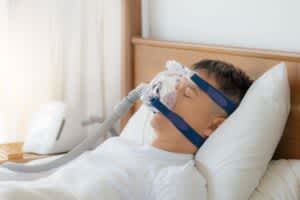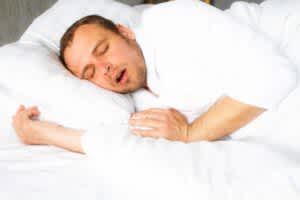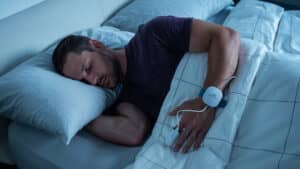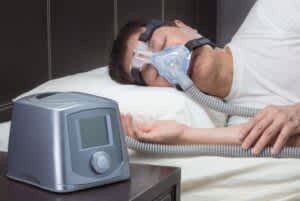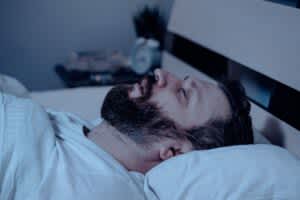If you feel short of breath while lying in bed, you may be dealing with orthopnea. This uncomfortable sensation can make it hard to sleep at night and typically signals an underlying medical condition. The good news is that for most people with orthopnea, a doctor can figure out the cause and suggest treatments that offer relief.
What Is Orthopnea?
Orthopnea is a medical term used to describe the feeling of shortness of breath when lying down or flat on one’s back. Doctors often refer to shortness of breath as dyspnea, or to someone who is short of breath as being dyspneic.
Orthopnea and other forms of dyspnea may present in different ways, depending on the cause. People have described these sensations as:
- Heavy breathing
- Unsatisfying breaths
- Breathing that takes more effort than normal
- Breathing that is shallow and rapid
- Feeling suffocated
Dyspnea can occur in any body position and in various types of situations. Orthopnea specifically refers to dyspnea that either appears or becomes worse when a person is lying down —and it usually disappears or improves when they sit or stand up.
A type of dyspnea called paroxysmal nocturnal dyspnea (PND) shares similarities with orthopnea. PND causes people to wake with severe shortness of breath an hour or more after falling asleep. As with orthopnea, PND usually subsides when a person sits or stands up, but unlike orthopnea, PND only occurs after a person has fallen asleep.
PND may signal a serious heart condition, so it is important to talk to your doctor if you wake up gasping for breath or feeling like you can’t get enough air.
Causes of Orthopnea
Orthopnea is not a medical condition itself but rather a symptom that points to one or more underlying medical conditions. Several common health conditions have been associated with orthopnea.
- Heart failure: Heart failure is when a person’s heart struggles to pump enough blood to the body to supply its need for oxygen. Lying down causes increased blood flow to the heart—more than the heart can pump, for some people with heart failure. This may cause fluid to accumulate in the lungs, leading to orthopnea.
- Chronic obstructive pulmonary disease (COPD): COPD is a lung disease characterized by difficulty breathing, a wet cough, and limited air intake. People with COPD may feel like they aren’t able to get enough air, and this feeling may intensify when they are lying down.
- Obesity: Some people with obesity may experience shortness of breath when lying flat. This is because of increased pressure on the lungs and because the diaphragm—a muscle involved in breathing—has trouble fully contracting.
- Sleep Apnea: Sleep apnea is a disorder that causes breathing to temporarily slow or stop during sleep. People with sleep apnea sometimes awaken with breathing discomfort, which may be orthopnea, PND, or another type of dyspnea.
Orthopnea has also been reported in individuals who snore or who have other heart conditions, panic disorder, or the neuromuscular disease amyotrophic lateral sclerosis (ALS).
The particular sensations that a person with orthopnea feels may point to a specific underlying medical condition. A detailed description of the breathing sensations and any accompanying symptoms—such as cough, nasal congestion, swelling, chest pain, or muscle weakness —can help a doctor determine the cause of orthopnea and how to best treat it.
How Causes of Orthopnea Are Diagnosed
If you experience orthopnea, you should talk to your doctor about your breathing discomfort. In order to diagnose the underlying condition that is causing your orthopnea, your doctor will likely ask questions, perform a physical exam, and order various medical tests.
Your doctor will ask questions about your symptoms and medical history. You may be asked to describe:
- The nature of the uncomfortable breathing sensations you are experiencing
- If the orthopnea came on quickly or gradually
- How many pillows you need to sleep comfortably
- If you have breathing discomfort in other positions
- If you have recently experienced changes in your weight
- If you have other symptoms in addition to orthopnea
During the physical exam, your provider will use a stethoscope to listen for any abnormal heart or breathing sounds. They will also check for other signs of heart or lung problems, like swelling in the legs or feet.
Your doctor may also order medical tests that can help uncover the causes of orthopnea, especially if they suspect a heart or lung condition.
- Chest x-ray: X-rays use electromagnetic waves—a type of radiation—to produce images of organs, bones, muscles, and other structures inside the body. A chest x-ray can show signs of heart failure and certain lung diseases.
- Echocardiogram: This test creates images of the heart using special sound waves. If a person has heart failure, it may detect problems in the structure of the heart or a decreased ability to pump to the body.
- Electrocardiogram: This test, also called an EKG or ECG, uses electrodes attached to the chest and limbs/extremities to record electrical signals produced by the heart. It can help diagnose heart problems related to the flow of electricity within the heart itself, such as arrhythmias.
- Pulmonary function tests: These medical tests provide information about how your lungs are functioning. During the tests, you will be asked to breath through a mouthpiece or tube, sometimes normally and sometimes rapidly. If the tests detect limited airflow, this may be evidence of COPD.
Treatment Options for Orthopnea
The best way to treat orthopnea is to address the underlying condition that is causing it. Treatment plans will vary depending on the cause, but may include:
- Medications that remove fluid from the body or make heart pump better
- Supplemental oxygen or continuous positive airway pressure (CPAP)
- Low-sodium diets
- Weight loss
- Lifestyle changes, such as exercising more, quitting smoking, or reducing stress
In the short term, propping the upper body up with pillows can help relieve symptoms of orthopnea. However, it’s important to speak to a doctor when orthopnea appears in order to determine the best treatment for any underlying causes.
References
Ask the Sleep Doctor
Have questions about sleep? Submit them here! We use your questions to help us decide topics for articles, videos, and newsletters. We try to answer as many questions as possible. You can also send us an email. Please note, we cannot provide specific medical advice, and always recommend you contact your doctor for any medical matters.


